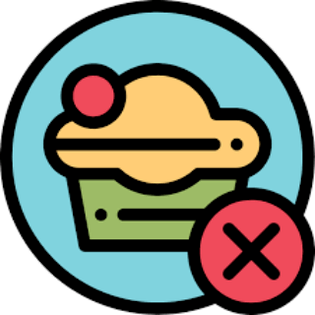The Japanese diet has gained popularity among people looking to lose weight. Above all, they are attracted by the short duration (only 14 days) and the availability of the necessary products.
How the Japanese diet was born
Many people believe that the Japanese diet is linked to the daily diet of the people of this country, but it is not. Most likely, the diet received this name due to the need for strict adherence to the diet and high efficiency. The Japanese are very helpful and responsible people, they approach any business with all the attention and precisely follow the established rules, which is why they achieve a high result.
Another version of how the name looks is where the diet was invented. It is believed to have been developed at the Japanese Yaeks Clinic. Nutritionist Naomi Moriyama, who developed the weight loss system, is fully confident in its effectiveness and the adaptability of the products to the usual diet of Europeans, whose tastes differ significantly from those of the Japanese.
The benefits of the Japanese diet

The Japanese diet will help cleanse the body of toxins, as well as bring the metabolism in order in just 14 days.
A large amount of fruit will saturate the body with fiber and help improve the functioning of the intestines, and a sufficient amount of food will maintain a feeling of fullness and high performance.
Characteristics and principles
The diet, unlike many others, does not involve fractional nutrition. It is designed for three meals without additional snacks. You cannot change the days of the diet in places and in no case try to "improve" the diet, otherwise it is no longer a Japanese diet and will have to start over.
Every morning you should drink a glass of cool water, it will help to speed up the metabolism and get rid of the feeling of hunger. The rest of the time, it is also advisable to drink as much pure (non-carbonated) or boiled mineral water as possible.
Shopping list

To maintain your diet successfully, you need to purchase the following foods:
- 1 packet of green tea of any type you like. Make sure there are no flavors in the composition.
- 1 packet of good (or ground) coffee beans.
- 2 cassettes (20 pcs. ) Chicken eggs.
- 1 kg. chicken fillet (breast).
- 1 kg. beef pulp (it is better to take lean).
- 2 kg. sea fish fillet.
- 0, 5 l. Extra virgin olive oil.
- 2 medium white cabbages.
- 1 kg. zucchini or eggplant.
- 2-3 kg. fresh carrots.
- 1 kg. any fruit other than bananas and grapes.
- 1 l. tomato juice.
- 1 l. kefir.
- 2 lemons.
All layouts should be fresh and the best you can find.
What shouldn't be in the diet

Avoid sugar and salt completely during the Japanese diet. The same rule applies to all types of baked goods, confectionery and alcoholic beverages.
Japanese diet menu per day
The Japanese diet is very similar in its diet to the well-known chemical diet, which is often used to treat obesity in diabetics. It also uses the effect of reducing the amount of carbohydrates while increasing the proportion of protein.
The diet menu is quite strict, no changes are allowed.
Day 1
- Breakfast: black coffee without added sugar, sweeteners or milk.
- Lunch: 2 hard-boiled eggs, boiled cabbage, seasoned with vegetable oil and a glass of tomato juice.
- Dinner: 200 gr. fried or boiled fish.
Day 2
- Breakfast: black coffee with a slice of rye bread.
- Lunch: boiled cabbage seasoned with vegetable oil + 200 gr. fried or boiled fish.
- Dinner: a glass of kefir with 100 gr. boiled beef.
Day 3
- Breakfast: black coffee with a slice of rye bread warmed in a toaster (you can replace it with a tasteless tasteless cookie).
- Lunch: any number of zucchini or eggplant fried in vegetable oil.
- Dinner: raw cabbage salad, seasoned with vegetable oil + 200 gr. boiled beef without salt.
Day 4
- Breakfast: fresh carrots of medium size, chopped on a grater or in any other convenient way + juice of a whole lemon.
- Lunch: a glass of tomato juice + 200 gr. boiled or fried fish.
- Dinner: salad of 200 gr. any fruit.
Day 5
- Breakfast: fresh carrots of medium size, chopped on a grater or in any other convenient way + juice of a whole lemon.
- Lunch: a glass of tomato juice + 200 gr. boiled fish.
- Dinner: 200 gr. all fresh fruit.
Day 6
- Breakfast: black coffee without additives.
- Lunch: 500 gr. boiled chicken breast without salt + salad of fresh carrots and cabbage, seasoned with oil.
- Dinner: a whole fresh carrot + 2 hard-boiled eggs.
7th day
- Breakfast: a glass of green tea.
- Lunch: 200 gr. boiled beef without salt.
- Dinner: 200 gr. all fresh fruit, or 200 gr. boiled or fried fish, or 2 hard-boiled eggs + fresh carrots, or a piece of boiled beef with a glass of kefir.
8th day
- Breakfast: black coffee.
- Lunch: 500 gr. boiled chicken breast without salt + raw carrot salad with cabbage, seasoned with vegetable oil.
- Dinner: 2 hard-boiled eggs + salad of fresh carrots dressed in vegetable oil.
Day 9
- Breakfast: fresh carrots seasoned with lemon juice.
- Lunch: 200 gr. boiled or fried fish with a glass of tomato juice.
- Dinner: 200 gr. all fresh fruit.
Day 10
- Breakfast: black coffee without sugar.
- Lunch: 3 medium carrots dressed in vegetable oil + boiled egg + 50 gr. cheese.
- Dinner: 200 gr. all fresh fruit.
Day 11
- Breakfast: black coffee without additives with a slice of rye bread.
- Lunch: any amount of fried eggplant or zucchini with vegetable oil.
- Dinner: 200 gr. unsalted boiled beef, salad of fresh coleslaw, seasoned with vegetable oil and 2 hard-boiled eggs.
Day 12
- Breakfast: black coffee.
- Lunch: 200 gr. boiled or fried fish with salad of fresh coleslaw, seasoned with vegetable oil.
- Dinner: a glass of kefir + 100 gr. boiled beef without salt.
Day 13
- Breakfast: black coffee without additives.
- Lunch: boiled cabbage, seasoned with vegetable oil + a glass of tomato juice + 2 hard-boiled eggs.
- Dinner: 200 gr. beef boiled or fried in vegetable oil.
Day 14
- Breakfast: black coffee without additives.
- Lunch: 200 gr. boiled or fried fish, salad of fresh coleslaw, seasoned with olive oil.
- Dinner: 200 gr. boiled beef without salt + a glass of kefir.
How to diet

In order not to interrupt your diet at the most inconvenient time, try to follow the recommendations:
- schedule it for the month when there are no major vacations and trips;
- always remember the motivation that made you lose weight;
- do you find a hobby;
- argue with a loved one that you won't break up;
- just believe in your own strength!
How to enter and exit the Japanese diet
Any diet is a great stress on the body, so you need to prepare for it in advance.

At least a week before the appointed day, start limiting yourself to your sugar intake and also gradually reduce the portions of food. Also, try to reduce (or even exclude) from the diet any dishes that can be classified as "fast food", "sweet" or "starchy". For example, if you ate 5 cakes per day, then one should be removed from the diet every day per week. Then, from the first day of the diet, the body will live peacefully for 2 days without cakes.
Many people find it helpful to surround themselves with various Japanese accessories (chopsticks, tea ceremonies, figurines, etc. ). They will help you tune yourself psychologically in the right way.
When the diet ends, under no circumstances should you run immediately and overeat your favorite meals. Start introducing familiar foods into your diet gradually, starting with small portions. Then the effect of weight loss may last for a few years, since it is not recommended to repeat the diet earlier. The best solution would be to introduce yourself to good nutrition, this habit will allow you to always stay in shape.
Contraindications
There is no ideal diet, so even this system may not be suitable for everyone. First of all, in the process of nutritional restrictions, the body is forced to undergo serious psychological tests. This is especially true for people who live in big cities, where you can find all kinds of cafes and fast food outlets at every stop. In addition, during the diet there is a serious restriction of access to nutrients, which puts additional stress on the body.
If a person has problems with the work of the cardiovascular system, kidneys or liver, he has chronic gastritis or an ulcer, in no case should he follow a Japanese diet. Otherwise, all ailments can sharply worsen: a large amount of fluid will affect the kidneys, and green tea and coffee suddenly act on the heart due to the high content of caffeine.
In addition, salt restriction can have serious consequences. Any doctor will confirm that a small amount of salt is simply necessary for the body for normal functioning, and sudden rejection of it leads to the withdrawal of fluid and thickening of the blood in the vessels. Therefore, many experts still advise lightly adding salt to food, despite strict dietary recommendations.
The Japanese diet has a large number of advantages, is easily tolerated, but may be contraindicated in people with certain diseases. Gwyneth Paltrow and many other famous people have actually lost weight.































